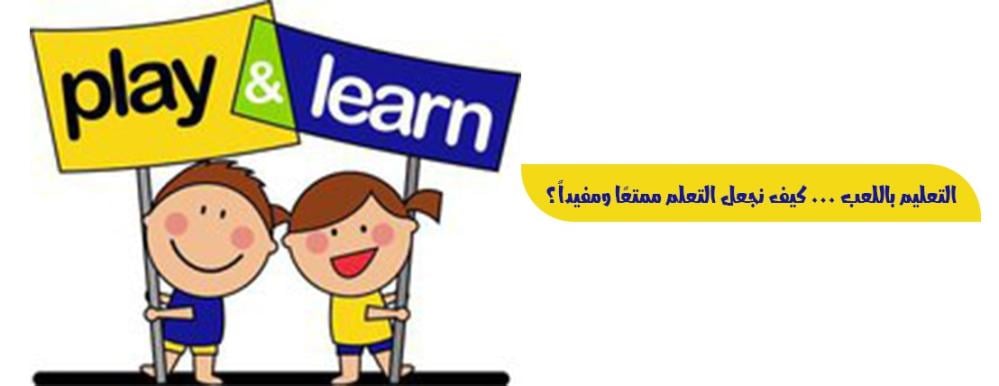
🧩 Learning Through Play: How to Make Learning Fun and Beneficial
In today’s modern world, the concept of education has radically changed. It’s no longer limited to sitting behind a desk and studying textbooks. The goal now is to make the learning process an enjoyable and knowledge-rich experience. Learning through play is one of the most important educational approaches that combines fun and benefit, integrating recreational activities with educational objectives in a way that allows children to learn without feeling they are in a “traditional lesson.”
In this article, we will explore the concept of learning through play, its importance, benefits, the best ways to apply it at home and school, and we will provide a list of the top 20 educational games for children, along with practical tips to turn learning into an exciting journey full of discoveries.
First: What is Learning Through Play?
Learning through play is an educational approach that integrates recreational activities and games into the learning process to encourage children to learn indirectly. The idea is that play is not just entertainment, but a powerful educational tool that helps reinforce knowledge, develop skills, and enhance critical and creative thinking.
Examples:
- Building blocks (LEGO) can enhance engineering thinking and problem-solving skills.
- Crossword puzzles can expand a child’s vocabulary.
- Educational digital games like Kahoot help with quick learning in an interactive way.
Second: The Importance of Learning Through Play
- Boosts motivation to learn – When learning is fun, children are more eager to gain knowledge and explore.
- Improves retention – Combining movement with mental activity helps embed information more deeply in memory.
- Develops social skills – Group games encourage cooperation, sharing, and resolving conflicts amicably.
- Enhances motor skills – Activities like sports or crafts develop both fine and gross motor abilities.
- Fosters creativity – Open-ended games without fixed solutions encourage thinking outside the box.
Third: Benefits of Learning Through Play for Children
- Develops emotional intelligence (empathy, self-control, understanding others’ feelings).
- Increases focus and attention span.
- Improves language skills and vocabulary.
- Teaches problem-solving and logical thinking.
- Boosts self-confidence through achievement.
- Encourages teamwork and collaboration.
- Helps discover talents in art, science, or sports.
Fourth: How Parents and Teachers Can Apply Learning Through Play
- Choose age-appropriate games – Match the game to the child’s mental and physical level.
- Link games to educational goals – For math, use games that require counting or calculation.
- Gradually increase difficulty – Start simple, then raise the challenge.
- Encourage creativity – Avoid giving ready-made answers; let the child explore.
- Balance fun and learning – Don’t turn the game into a disguised lesson.
Fifth: Top 20 Educational Games for Children
- LEGO Education – Engineering thinking and creativity.
- Scrabble – Vocabulary and spelling skills.
- Tangram Puzzle – Spatial reasoning and problem-solving.
- Kahoot – Online interactive learning.
- Osmo Genius Kit – Blends real-world play with smart apps.
- Rush Hour Logic Game – Logic and planning.
- SmartLab Toys – Hands-on science learning.
- Monopoly Junior – Basic finance and math skills.
- Brain Quest – Brain-stimulating quiz cards.
- Robot Turtles – Basic programming for kids.
- Math Bingo – Fun math practice.
- Pictionary – Creativity, drawing, quick thinking.
- Science Lab Kits – Fun, safe experiments.
- Story Cubes – Creative storytelling.
- GeoSafari Jr. Talking Globe – Interactive geography.
- Coding Critters – Intro to coding for young kids.
- Chess for Kids – Strategic thinking and patience.
- Word Search Puzzles – Vocabulary and visual scanning.
- Build-a-Story Cards – Imaginative storytelling.
- Outdoor Scavenger Hunt – Educational outdoor activity.
Sixth: Practical Examples of Learning Through Play
At home:
- Create a dedicated educational play corner.
- Organize “Science Day” with simple experiments.
- Use supervised educational apps.
At school:
- Turn lessons into competitions.
- Combine movement games with class activities.
- Use playground spaces for outdoor activities.
Seventh: Tips to Make Learning Through Play More Effective
- Set a fixed time for educational play.
- Play with your child to strengthen family bonds.
- Try different game types to discover preferences.
- Ensure games are safe in terms of materials used.
- Reward effort, not just winning.
Eighth: FAQs About Learning Through Play
Q: Can learning through play replace traditional education?
A: No, but it complements it, making learning more effective and engaging.
Q: What age is suitable for learning through play?
A: All ages—game types vary depending on the stage.
Q: Are educational digital games safe?
A: Yes, if chosen carefully and supervised by parents.
Ninth: Conclusion
Learning through play is not a luxury—it’s a true investment in a child’s future. It combines fun with meaningful learning, instilling a love of knowledge and exploration. By choosing the right games and integrating them into daily routines, we can raise a more creative, confident, and skilled generation.

